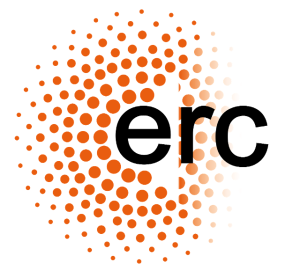
EU-funded EUDAIMONIA Project
National institutional autonomy within the EU legal order:
Uncovering and addressing its distinctive appearances, origins and impact on Member States’ administrations
National institutional autonomy within the EU legal order: uncovering and addressing its distinctive appearances, origins and impact on Member States’ administrations
Despite the significant progress in European integration, the institutional design and organisation of the administrative structures responsible for implementing and applying European Union law have traditionally remained the responsibility of the Member States of the European Union (EU). However, over the last decade, EU legislation has increasingly imposed organisational requirements on the administrative structures of these Member States. This development is all the more remarkable since EU law has long recognised the existence of a principle of national institutional and administrative autonomy. This principle consists of guaranteeing the freedom of Member States to designate and structure the administrative bodies responsible for the application and implementation of EU rules. To what extent does the wider participation of the EU in Member States’ decisions on administrative design really reach its limits and can parallels be found between different areas of regulation? If so, what are the implications for our understanding of institutional autonomy as a principle of EU (administrative) law? So far, legal research, including the IP’s earlier work on EU market surveillance, has given only limited attention to these important questions.
The main objective of the EUDAIMONIA project (National institutional autonomy within the EU legal order: uncovering and addressing its distinctive appearances, origins and impact on Member States’ administrations) led by Pieter Van Cleynenbreugel, professor of European Union law, will be to analyse the extent of Member States’ administrative autonomy and to discover, explain and conceptualise the limits imposed on it by European Union law. This will be done by mapping and comparing the influence of EU law on Member States’ administrative models in eighteen EU-influenced regulatory areas. As the traditional legal research toolbox does not sufficiently capture the various factors that have given rise to Member States’ decisions on administrative designs, the project will then use actor-network theory (ANT) as a starting point to discover these factors. Using this particular research methodology, new and more comprehensive data obtained through case studies and in-depth questionnaires will allow for the formulation of theoretical modifications and policy recommendations.
Objectives:
- to map for the first time and systematically the explicit and implicit organisational or institutional design obligations EU secondary legislation imposes on Member States’ administrative structures across 18 fields of EU-influenced regulation;
- to compare the differences and similarities between the mapped organisational and institutional design obligations;
- to uncover the concrete impact of the EU organisational and institutional design obligations have on the institutional and organisational design of Member States’ administrative structures in three case studies;
- to define more generally the relevant factors (including and in addition to EU secondary legislation) influencing the institutional and organisational design of Member States’ administrative structures;
- to analyse how the previously identified relevant factors fit the EU-Member States competence division framework against the background of which institutional/administrative autonomy discussions take place;
- to formulate recommendations allowing for a more structured, developed or coherent operationalization of institutional/administrative autonomy as a value within the EU legal order.
Covered areas:
| Competition-related rules | Stability and safety-related rules | Weaker party protection-related rules |
|---|---|---|
|
|
|
Empirical component:
The sociological/empirical analysis will complete the formal black-letter analysis of the 18 areas EU law. Concretely, 2 research methods will be employed:
- Semi-structured interviews conducted in 4 EU member states: France, Poland, Portugal, Romania
- Questionnaire sent to all relevant stakeholders participating in the implementation of EU law in member states
Principal Investigator
VAN CLEYNENBREUGEL Pieter
LCII Director | LLM Co-director | Professor, ULiege
PostDoc Researcher
BOIS Julien
Senior Researcher | PostDoc Researcher
Ph.D Researcher
TECQMENNE Maxime
Junior Researcher | PHD Student | Teaching Assistant
Professor Pieter Van Cleynenbreugel and Julien Bois, PhD will introduce the EUDAIMONIA research project on October 29th, at 12.30 in the I.E.J.E classroom (Liege University, B33, 2nd floor). All UR Cité researchers are warmly invited to take part in the presentation.
The main objective of the EUDAIMONIA project will be to analyse the extent of Member States’ administrative autonomy and to discover, explain and conceptualise the limits imposed on it by European Union law. More info available on the UR Cité Website.
Stay tuned for more on this outsanding project!
Dashboard: European Commission Fact Sheet
Programme: H2020-EU.1.1. – EXCELLENT SCIENCE – European Research Council (ERC)
Funding Scheme: ERC-2020-STG – ERC STARTING GRANTS


